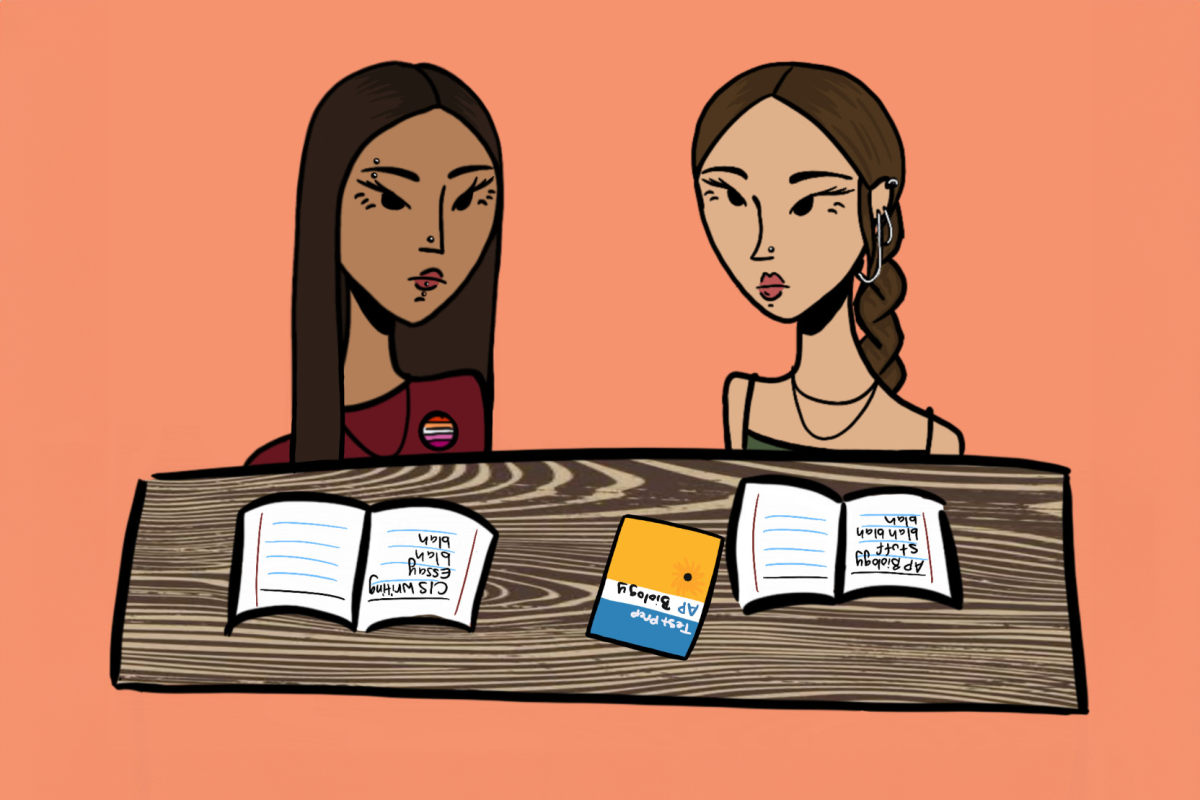On Valentine’s Day, students were herded to classrooms after a fight broke out in first lunch and escalated in third lunch to several more altercations. What was almost more surprising than the fight was the speed and ferocity with which local media reported on the brawl. Within an hour, there were articles up on multiple media outlets proclaiming that 200 to 300 people were involved in the fight and four people were hospitalized, alarming hoards of parents and friends of South students.
First of all, the claim that 200 to 300 people were involved in the fight is outrageous. It creates an image of a “Mean Girls”-style brawl in which students are throwing punches at one another everywhere you look. This was not the case. There were maybe twenty students physically fighting, more students throwing things, and dozens acting as spectators. While the students who stayed to watch the fights undoubtedly added to the high energy and tension, to declare the fight of that great a magnitude is unfair.
I’m assuming there are two main reasons news outlets would proclaim that the fight consisted of this many people: To justify the police’s use of mace on high school students, and to sell the controversy. Neither of these are particularly ethical journalistic practices.
The story spread, making national news in the Los Angeles Times and even international news on the Daily Mail’s website, where the U.K. outlet proclaimed it a “race riot.” Because of the speed and intensity with which local media responded to the altercation at South, citizens of the U.K. were reading about a brawl in a Minneapolis high school.
Here’s the problem: the intense coverage of the fight at our school only reinforced the stigma of inner city schools. Yes, the brawl was important to cover in the news, but giving so much attention to an incident that so negatively portrays our school strengthened existing stereotypes of the “typical” inner city school’s violent students and constant tension between kids. We have seen this stereotype a million times in popular movies and TV shows; Bring It On 3, for example, is a movie about a rich white girl who moves and has to attend the “ghetto” school, where girls threaten to fight her for looking at them. This depiction of “ghetto” kids reduces all the students at inner city schools to one violent, angry person. In reality, South is a multi-faceted school teeming with kids who are really trying to make a difference, and when local media blows up the fights at our school, those kids get overlooked in the panic.
A great example of this was the Star Tribune’s coverage of the s.t.a.r.t. dinner that took place the Wednesday after the fight. The dinner took place in the media center and was a huge success; the group that came together represented a wide range of ethnic backgrounds, and the students who spoke started a conversation about race that could be the beginning of long-lasting progress at South.. The Star Tribune ran an article the following day titled “Minneapolis South High clash exposes Somali- and African-American student rift,” which featured several photos of students at the dinner.
Instead of talking to the students who ran the dinner or covering the positive outcome of the dinner, the article featured two Macalester College professors discussing possible causes of the tension between African-American and East African communities in Minneapolis. It was an interesting article, but the visuals were misleading. The sources they interviewed had no connection to South, and because the article ended up being conflict-based, it glossed over the fact that student-led progress was being made.
Instead of mislabeling an article as a cheap way to draw readers’ eyes, perhaps write a headline that properly denotes what the article is about. Or better yet, talk to students making important efforts to alleviate racial tension at our school as opposed to focusing on an abstract explanation of where the tension may be from.
To be fair, many local news outlets made the effort to get to the bottom of the fight at our school, and several succeeded. Most of the problem was the result of the initial reaction of local media. KSTP quoted students’ tweets in one of their first articles about the fight, which is an entirely inappropriate source for a professional news outlet. Reactionary tweets are not going to provide any reliable information about what happened to cause the fight; they will only cause further hype about the violence at our school.
In addition to the poor coverage of the “race riot” at our school, many local media outlets did a horrible job of covering the recent All Nations walkout. KSTP, for example, supplemented an article about the walkout with a photo of the brawl with a quote on top reading, “This is turning into a riot.” This is an entirely unrelated and inappropriate photo to accompany this article. The only relation that the walkout has to the fight, if any, was that it encouraged the creators of the walkout to make an active change. Contrary to local coverage, the walkout was not just designed in order to ease racial tensions. The purpose of the walkout was to promote inter-cultural learning and understanding, and to demand better integration of the All Nations program in the rest of the school.
The Valentine’s Day fight and walkout at our school were important to cover in local media, but the coverage was misleading and disappointing. The media’s reaction was detrimental to our image as a school, and many stories tried to stir up more controversy than existed. Hopefully in the future we can give the media good reason to cover the positive efforts at our school, and in return, they can give equal coverage to those efforts.






